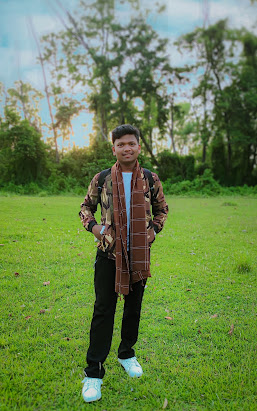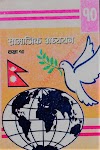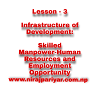Class 12 English Guide
5.Human Right and the age of Inequlity (By:-Samuel Moyn)
Summary
In “Human Rights
and the Age of Inequality” Samuel Moyn deals with the drastic mismatch between
the egalitarian (equal) crisis and the human rights remedy that demands not a
substitute but a supplement. He points out that the human rights regime and
movement are simply not equipped to challenge global inequalities.
Moyn
tells a story about Croesus, the last Lydian king, who was rich and thought he
was the happiest person on Earth. To him, his people should be happy and free
of any pain, but he didn't want to spend his money on them. After he lost, the
Persian King Cyrus the Great and his troops took over his money.
The
author compares this situation to today's world, where there is a lot of
inequality and not enough money and resources for everyone. There hasn't been
any progress toward equal rights and property for rich and poor people around
the world. In order to solve all of these problems, you need to make sure
everyone gets the same amount of money. He finds it hard to do this in real
life. To connect the history of human rights with the history of economics, he
says that there are two main steps to do:
The
first was the heroic era of national welfare states after World War II.
Second,
in the 1940s, politics and economics took over the country.
But
three important things were left out of Franklin Roosevelt's famous State of
the Union call for a second Bill of Rights that included protections for the
poor and the middle class: Provincial America's entry into the North Atlantic
consensus, which promises and imagines a world without hunger. During the years
after 1940, favoritism caused the world to split into two camps: one led by the
United States and one led by the Soviet Union. This caused a lot of damage to
human rights. Also, post-World War II decolonization did not provide the
intended prosperity and human rights because these governments put
"national well-being" above "equal rights."
Samuel
Moyn asks whether or not there should be another human rights movement. He then
uses Herodotus' example of truth and reality, which was about the need for
social and economic justice to be transferred from the rich to the poor around
the world. They say that everyone has the same amount of freedom and right, but
this isn't true in real life. Until and unless this economic and political
framework is still in place, humans won't be able to have true freedom and
rights. The government must make and enforce laws that make sure that everyone
has the same amount of money, and huge and radical movements are important for
an egalitarian society.
In the
end, our shared fate is to live in the world like Croesus. In this world, the
rich have a lot of fun, freedom, and everything, while the poor live in the
realm of illusion, where they have floating equality and freedom.
Answer the following questions.
a. What is the first human rights declaration adopted by
the United Nations?
➜ The first human rights declaration adopted by
the United Nations is mobilization for economic and social rights.
b. When is Human Rights Day observed?
➜ Human Rights Day is observed on 10th December
every year.
c. What is the goal of the Universal Declaration of Human
Rights?
➜ The goal of the Universal Declaration of
Human Rights is to provide a list of the most basic entitlements or key values
like fairness, dignity, equality and respect that humans deserve thanks to
being human itself. Furthermore, its aim is to assert the " foundation of
freedom, justice and peace in the in the world."
d. What are two big stages that involve writing the
history of human rights in relation to that of political economy?
➜ The two big stages that involve writing the
history of human rights in relation to that of political economy are:
·
The heroic age of
national welfare after World War II.
·
The bitter enemies of the
new cold war era in 1948.
e. What are the facts that have been missed in
Roosevelt’s call for a “second Bill of Rights”?
➜ The facts that have been missed in
Roosevelt's call for a "second Bill of Rights" are:
·
First, it marked a
characteristically provincial America's Late and ginger entry into an already
foreordained North Atlantic consensus.
·
Second, his highest
promise was not a floor of protection for the masses but the end of
"special privileges for the few" - a ceiling on inequality.
·
Lastly, Roosevelt
certainly hoped it would span the globe but it was organized nationally, not
internationally.
f. Write the truth expressed in Herodotus’s Histories.
➜ The truth expressed in Herodotus' Histories
is that global socio-economic justice, like local socio-economic justice, would
require redistribution under pressure from the rich to the poor by novel forms
of legal activism.
g. Why is the Universal Declaration of Human Rights
important to you?
➜ The Universal
Declaration of Human Rights is important to me as it works in favour of all
human beings for their rights, justice, equality, equity by removing
partiality, injustice, inequality, discrimination, and so on from society.
h. Is another human rights movement necessary? Why?
➜ Yes, another human rights movement is
necessary as the essayist finds Human Rights is functioning under political
suppression constrained in human affairs. He wishes to see another Human rights
movement in the coming days due to following reasons:
·
People who are in
powerful positions found violating the laws.
·
Inequality has been
contained in human affairs.
·
Nepotism and favouritism
is still in practice.
·
Law is to be given top
priority.
·
Political and social
hegemony is still prevalent in the world.
·
Laws and rights are only
documented rather it is not in practice.
·
There is need of rights
and justice for all human beings whether they are rich or poor, belong to upper
class or lower class.
h. What are the challenges in maintaining human rights in
Nepal? vvi
➜ Human rights are the basic rights and
freedoms that belong to everyone. International law, including treaties,
contain the provisions which give human rights legal effect.
Human rights was established in the year 2000 as a
statutory body under the Human Rights Commission Act 1997 (2053 BS) in Nepal.
The interim Constitution of Nepal 2007 (2063 BS) made the NHRC a constitutional
body.
The main challenging factors in maintaining human rights
in Nepal are as follows:
Ø
Poverty (particularly in
rural areas) * Education disparities
Ø
Gender inequality
*Health issues
Ø
Child rights violations
* Misuse of power
Ø
Nepotism, corruption,
bribery, illiteracy and ignorance of people
Ø
Priority for the personal
benefits or favour
Ø
Lack of proper mechanism
to systematize policies
Lack of proper strategies to implement the rules of laws etc.


.png)


.png)




.gif)


.png)
0 Comments